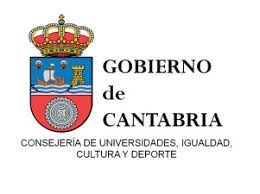Ecologies of translation: Chinese classical opera and Spanish Golden Age Theatre
DOI:
https://doi.org/10.55422/bbmp.441Keywords:
Translation, Performance, Reception, Baroque, EmotionAbstract
This article examines a key task of the translator, which is to identify the affordances of the new contexts in which the translation might flourish as an independent work. It proposes that our contemporary interest in the Baroque as a performance aesthetic provides a meaningful framework for realizing the full performance potential of both Spanish Golden Age plays and Chinese classical operas in English. Both forms have, to a greater or lesser extent, been caught in an impasse of notional uniqueness, in the way in which many critics, translators and, in the case of Chinese classical operas in particular, nationalist interpretation, insist on textual reverence rather than power in performance. At the heart of this power lies the sustained directional energy of emotion as the principal agent of audience engagement. Such emotion does not preclude thinking, but rather folds it into the overall affective power that the comedia and the Chinese opera undeniably exercise on stage.
Downloads
Publication Facts
Reviewer profiles N/A
Author statements
Indexed in
- Academic society
- Sociedad Menéndez Pelayo
- Publisher
- Sociedad Menéndez Pelayo
Global Statistics ℹ️
|
434
Views
|
221
Downloads
|
|
655
Total
|
|
References
AGAMBEN, Giorgio. (1998). Homo Sacer: Sovereign Power and Bare Life. Daniel Heller-Roazen (Trad.) Redwood City (CA). Stanford University Press.
BARNETT, Laura. (2013). «National Theatre: Do Audience Responses Play Out Along Country Lines?» The Guardian. https://www.theguardian.com/stage/2013/jul/12/nationality-theatre-country-audience-response
BATAILLE, Georges (1962). Death and Sensuality: A Study of Eroticism and the Taboo. New York. Walker and Co.
BATTEY, Robert. (2014). «Peking Opera at Kennedy Center Has the Right Moves, if Not the Best Sounds». The Washington Post. https://www.washingtonpost.com/entertainment/theater_dance/peking-opera-at-kennedy-center-has-the-right-moves-if-not-the-best-sounds/2014/08/28/6a0e5760-2ecf-11e4-be9e-60cc44c01e7f_story.html
BENTLEY, Eric. (1968). Life of the Drama. London. Methuen.
-----. (1970). «The Comedia: Universality or Uniqueness? ». Hispanic Review 38.2. 147-173. DOI: https://doi.org/10.2307/471888
BROCKETT, Oscar, and Franklin HILDY. (2008). History of the Theatre. Boston. Pearson.
CHINA CULTUAL CENTRE. (2019). https://msmy.facebook.com/cccsingapore/posts/1614167582061395
CALDERÓN DE LA BARCA, Pedro. (1995). The Painter of Dishonour. David Johnston y Laurence Boswell (Trans.) London. Oberon.
FELSKI, Rita. (2015). The Limits of Critique. Chicago. University of Chicago Press. DOI: https://doi.org/10.7208/chicago/9780226294179.001.0001
FISCHER-LICHTE, Erika. (2014). «Introduction». The Politics of Interweaving Performance Cultures: Beyond Postcolonialism. Erika Fischer-Lichte, DOI: https://doi.org/10.4324/9781315858142
Torsten Jost y Saskya Iris Jain. New York, London. Routledge. 1-21.
GIBSON, James J. (1979). The Ecological Approach to Visual Perception.Hove. Psychology Press.
GIL-OSLE, Juan Pablo y Frederick A. DE ARMAS, eds. (2019). Faraway Settings: Spanish and Chinese Theaters of the 16th and 17th Centuries. Madrid, Frankfurt. Iberoamericana Vervuert. DOI: https://doi.org/10.31819/9783964568922
GOLDSTEIN, Joshua. (2007). Drama Kings: Players and Publics in the Re-creation of Peking Opera. Berkeley, Los Angeles, London. University of California Press. DOI: https://doi.org/10.1525/9780520932791
GUAN, Hanqing. (1958). Selected Plays of Guan Hanqing. Xianyi Yang and Yang Gladys (Trans.) Beijing. Foreign Languages Press.
GUNDERMANN, Karsten. (2010). Le Cinesi. https://www.lartedelmondo.de/index.php%EF%B9%96id=87&L=1&tx_ttnews%5Btt_news%5D=20&cHash=7c596773fd3087e9f828d32518e26b83.html
HARE, David. (1991). Writing Left-Handed: Collected Essays. London. Faber and Faber.
HONG, Shen. (1959). [Nuestra traducción: The «Lady Precious Stream» that Humiliates China] ». In S. Hong, [Nuestra traducción: The Collection of Hong Shen's Works]. Beijing. Chinese Theatre Press. 244-253.
HUTCHEON, Linda. (2012). A Theory of Adaptation. New York, London. Routledge. DOI: https://doi.org/10.4324/9780203095010
JOHNSTON, David. (2007). «Historicising the Spanish Golden Age: Lope’s El perro del hortelano and El caballero de Olmedo in English». The Spanish Golden Age in English. Catherine Boyle and David Johnston (Eds.) London. Oberon. 50-51.
KAUP, Monika. (2018). «Feeling Baroque in Art and Neuroscience: Joy, Sadness, Pride, and a Spinozist Solution to the Quest for Happiness». Emotion and the Seduction of the Senses, Baroque to Neo-Baroque. Lisa Beaven y Angela Ndalianis (eds.) Kalamazoo. Medieval Institute Publications. DOI: https://doi.org/10.2307/j.ctvd1c8n2.7
KENNEDY, Dennis. (1993). «Introduction». Foreign Shakespeare: Contemporary Performance. Cambridge. Cambridge University Press. 1-18.
LAMBERT, Gregg. (2004). The Return of the Baroque in Modern Culture. London. Bloomsbury. DOI: https://doi.org/10.5040/9781472545954
LI, Jingrong. (2012). «Peking Opera, now fully translated in English». China.org.cn. http://www.china.org.cn/arts/2012-10/24/ content_26888597. htm
LI, Ruru. (2010). The Soul of Beijing Opera: Theatrical Creativity and Continuity in the Changing World. Hong Kong. Hong Kong University Press.
MACCOLL, Ewan. (1986). «Introduction». Agit-prop to TheatreWorkshop: Political Playscripts 1930-1950. Manchester. ManchesterUniversity Press. 1986. xxxxix-xi.
MACLEISH, Archibald. (1952). Collected Poems: 1917-1952. Boston.Houghton Mifflin Harcourt.
MARCUSE, Herbert. (2007). Art and Liberation: Collected Papers ofHerbert Marcuse. New York, London. Routledge. DOI: https://doi.org/10.4324/9780203966617
MARTIN, John Rupert. (2018). Baroque. London. Routledge. DOI: https://doi.org/10.4324/9780429502125
PARKER, A. Alexander. (1958). «The Approach to the SpanishDrama of the Golden Age». The Tulane Drama Review 4.1. 42-59. DOI: https://doi.org/10.2307/1124804
PATERSON, A.K.G. «Preface». (1991). Pedro Calderón de la Barca: The Painter of His Dishonour, El pintor de su deshonra. A.K.G. Paterson (Trans.) Warminster. Aris and Phillips.
PAZ, Octavio. (1987). Convergences: Essays on Art and Literature. New York. Harvest.
REICHENBERGER, Arnold. (1959). «The Uniqueness of the Comedia». Hispanic Review. 38. 2. 147-173. DOI: https://doi.org/10.2307/471021
SELMAN, Chris. (2019). «Peking Opera Company Present Stunning but Challenging Programme at Sadler’s Wells». Gay Times. https://www.gaytimes.co.uk/culture/peking-opera-company-present-stunning-but-challenging-programme-at-sadlers-wells-review/
SLOTERDIJK, Peter. (2011). Neither Sun nor Death. Steve Corcoran (Trad.). Cambridge. MIT Press.
-----. (2014). Globes: Spheres II. W. Hoban (Trans). Cambridge. MIT Press.
SONTAG, Susan. (1966). Against Interpretation and Other Stories. New York. Noonday Press.
SWATEK, Catherine. (2002). «Boundary Crossings: Peter Sellars's Production of Peony Pavilion». Asian Theatre Journal 19.1. 147-158. DOI: https://doi.org/10.1353/atj.2002.0017
SWED, Mark. (2000). «A Short Trip to The Peony Pavilion». Los Angeles Times.https://www.latimes.com/archives/la-xpm-2000-jan-17-ca54744-story.html
TANG, Xianzu. (2002). The Peony Pavilion: Mudan Ting. Cyril Birch (Trans.) Bloomington. Indiana University Press.
VEGA, Lope de. (1990). The Dog in the Manger. Victor Dixon (Trans.). Ottawa. Dovehouse.
-----. (2004).The Dog in the Manger. David Johnson (Trad.).London. Oberon Books.
-----. (Nov. 2017) The Agony and the Style. David Johnston (Trad.). Performed Richard Burton Theatre, Royal Welsh College, Cardiff.
WANG, Shifu. (1968). The Romance of the Western Chamber. S. I.Hsiung (Trad.). New York. Columbia University Press.
WICHMANN, Elizabeth. (1990). «Tradition and Innovation in Contemporary Beijing Opera Performance». The Drama Review. (1988) 34.1. 146-178. DOI: https://doi.org/10.2307/1146013
WILLIAMS, Raymond. (1998). «The Analysis of Culture». Cultural Theory and Popular Culture: A Reader (Second Edition) John Storey (Ed.) Athens. The University of Georgia Press.
YAO, Yuan. (2013). Our Translation: Dream in the Garden Volume II. https://artist.artron.net/yishujia0007065/2-7970.html
YEH, Diana. (2014). Happy Hsiungs: Performing China and the Struggle for Modernity. Hong Kong: Hong Kong University. DOI: https://doi.org/10.5790/hongkong/9789888208173.001.0001
Downloads
Published
How to Cite
Issue
Section
License
Copyright (c) 2022 David Johnston, Lisha Xu

This work is licensed under a Creative Commons Attribution-NonCommercial 4.0 International License.







